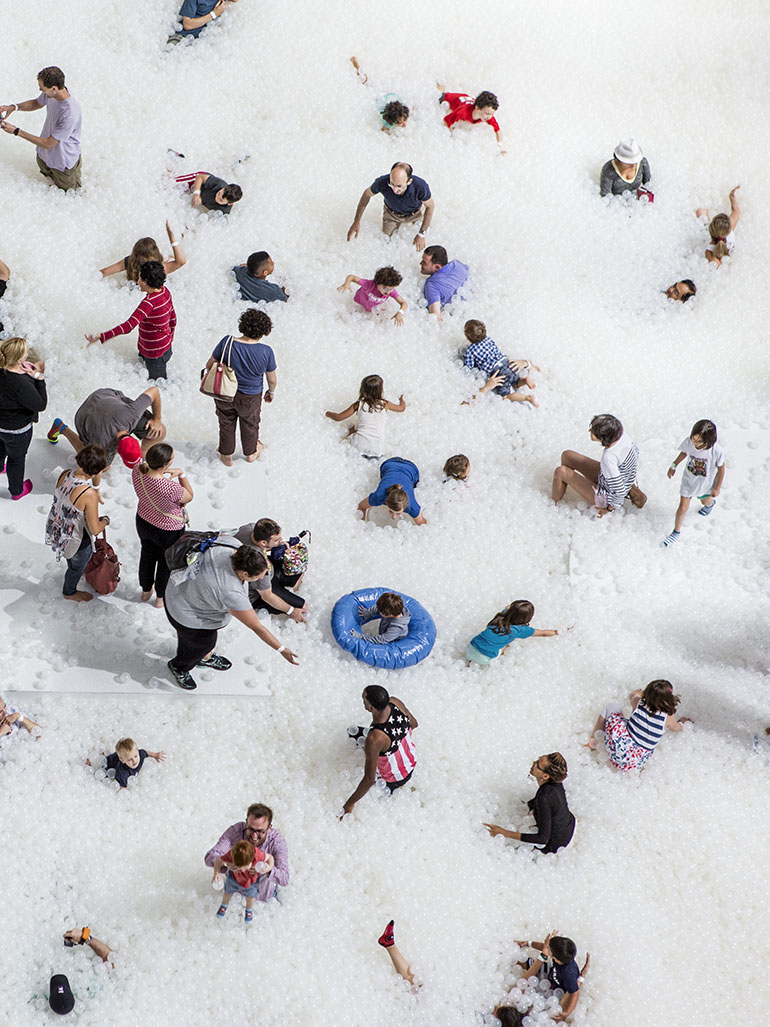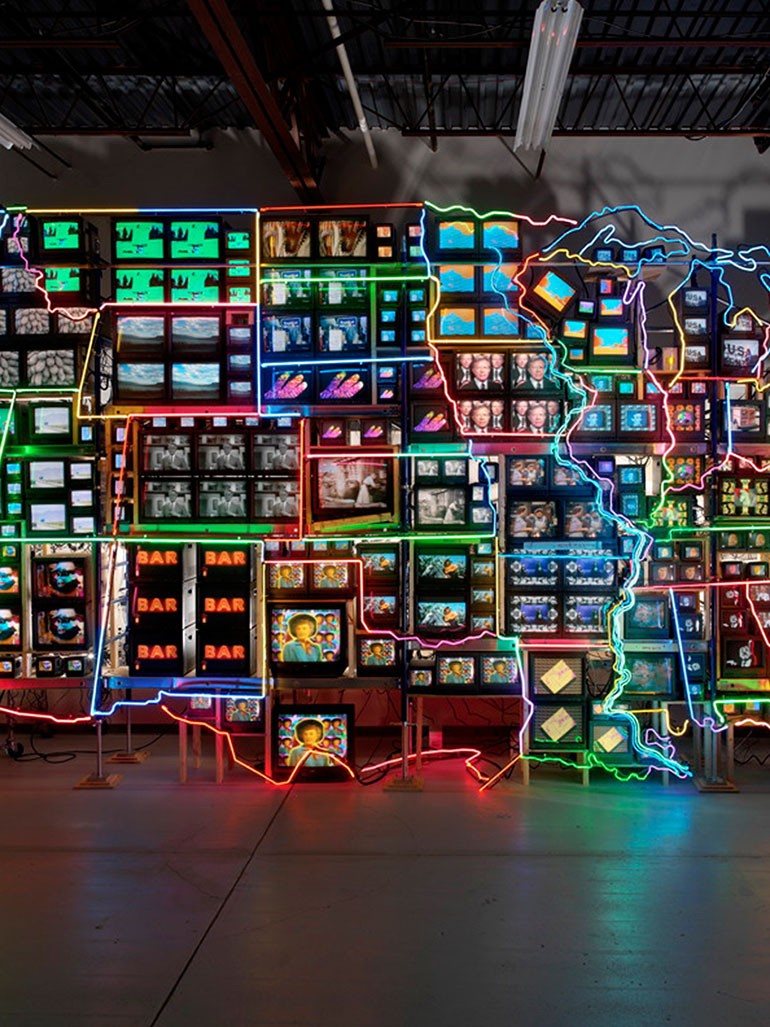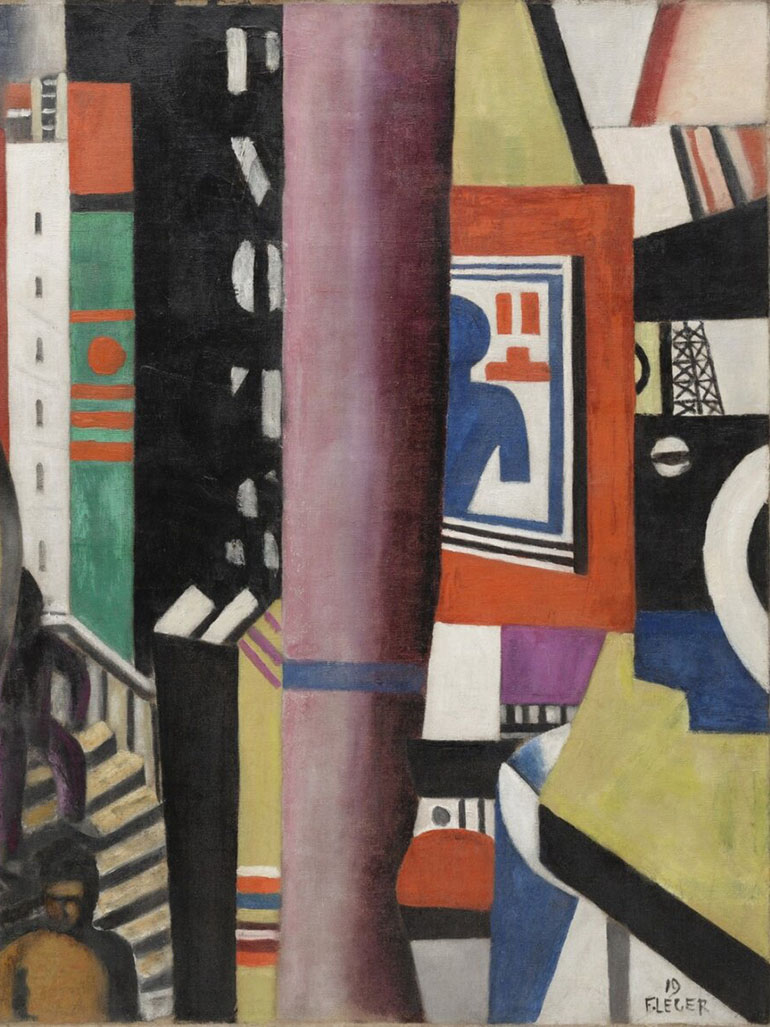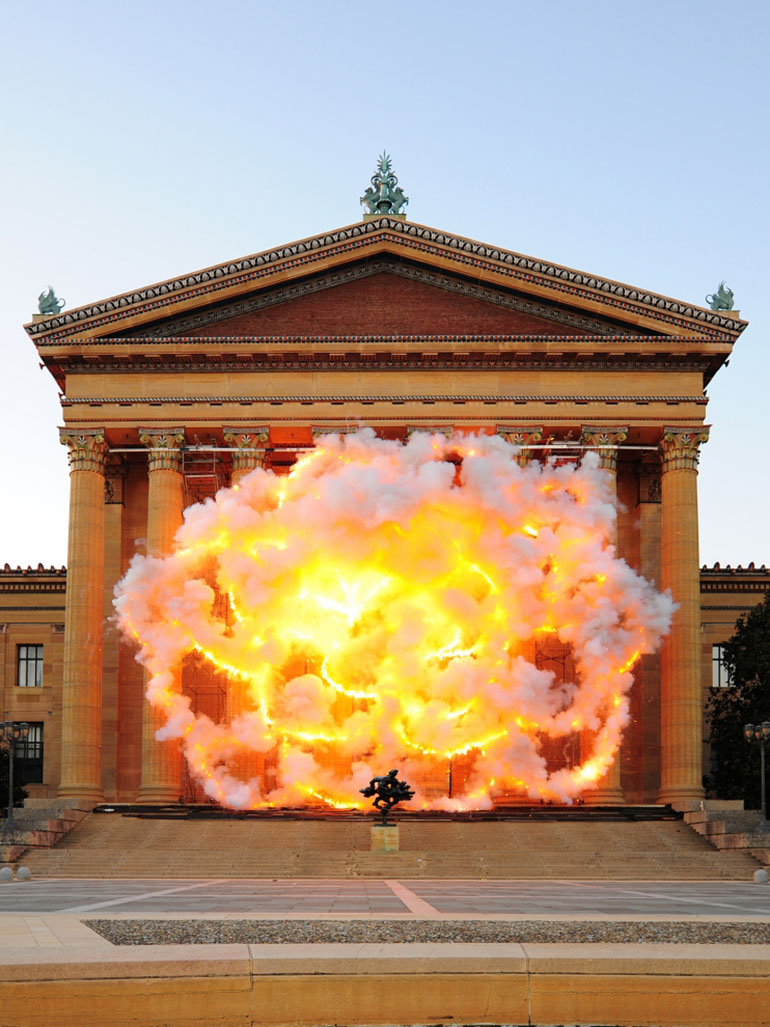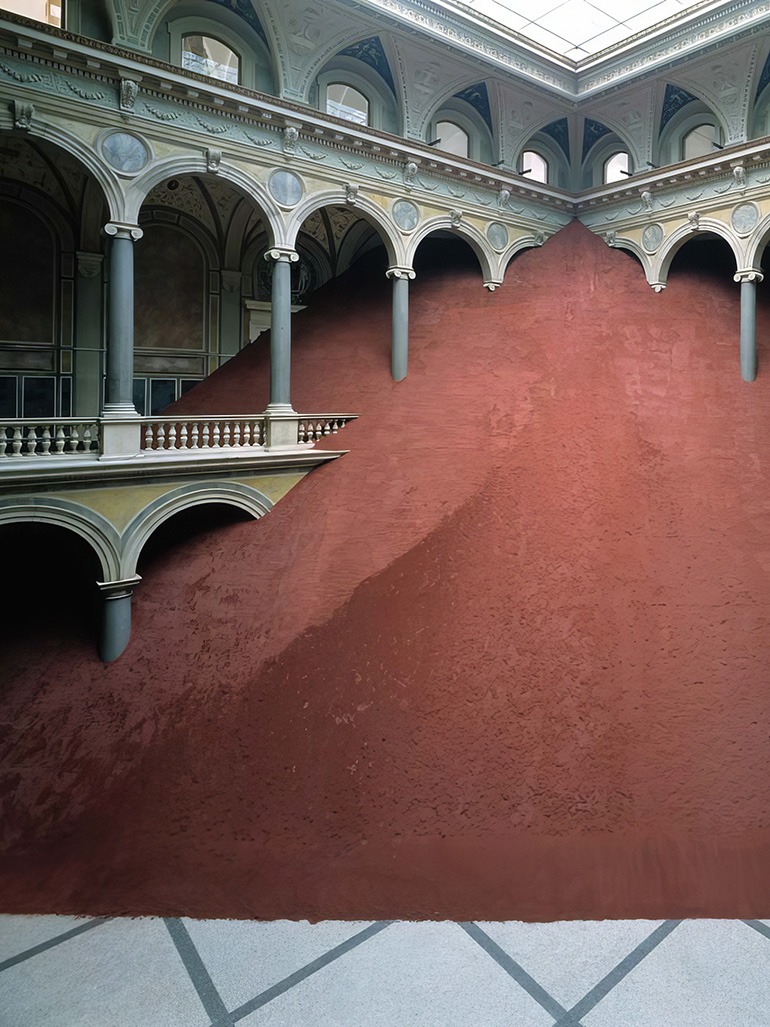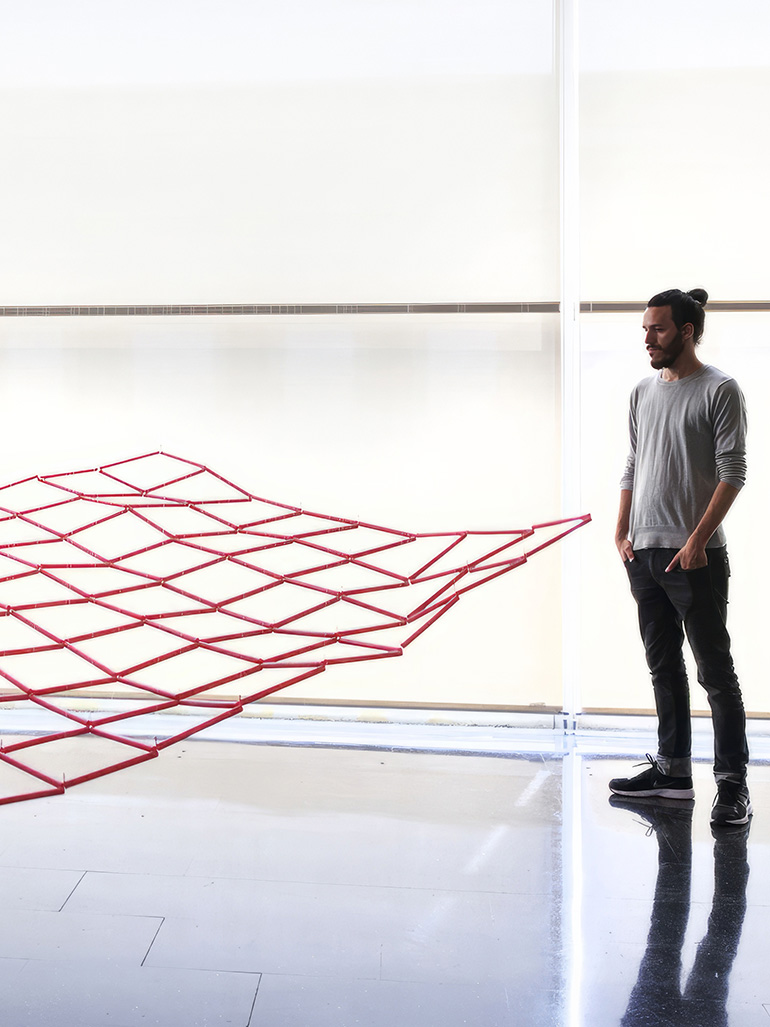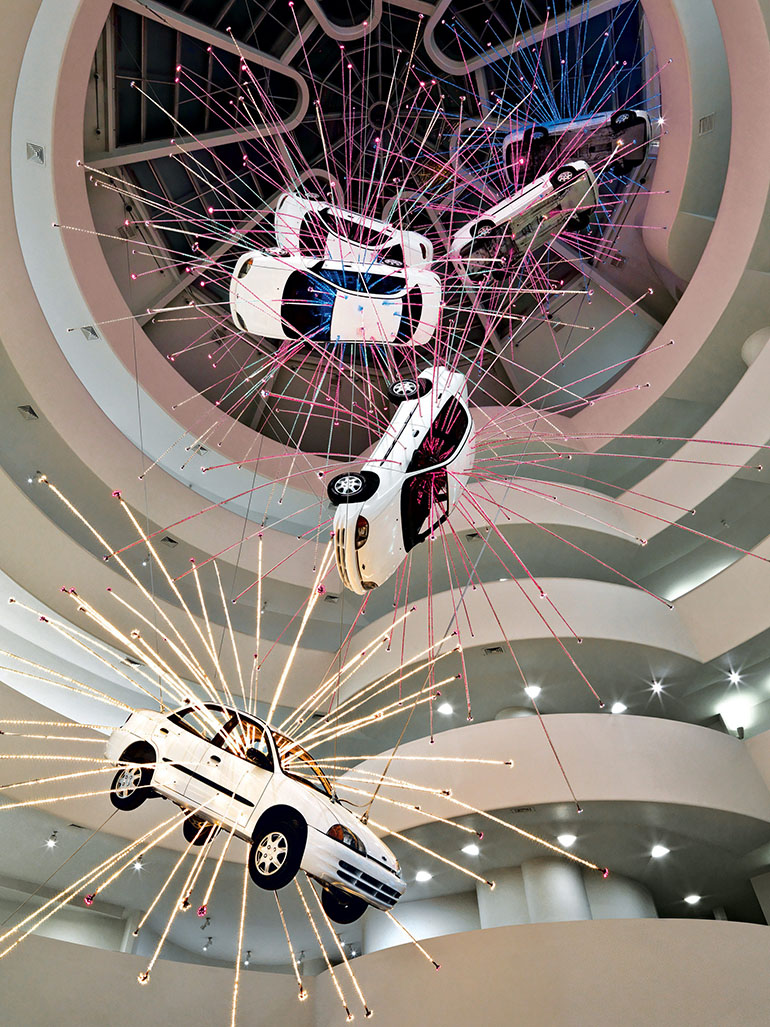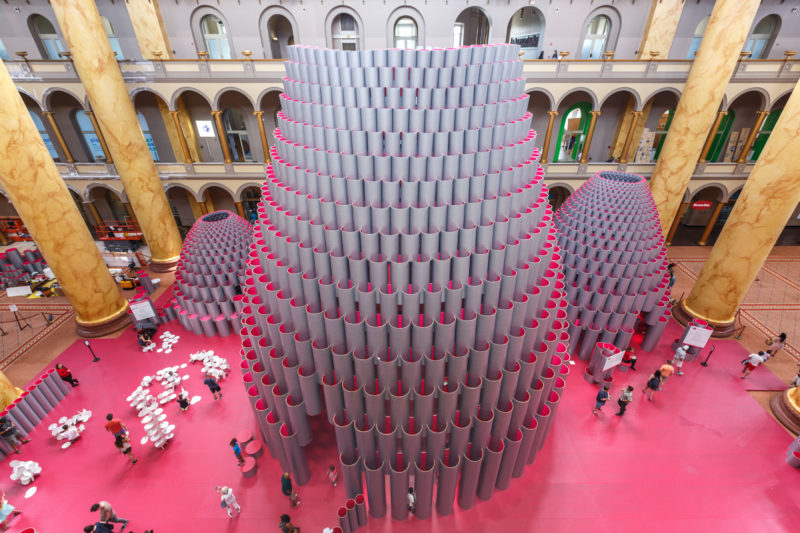
What was it?
“Hive” refers to an installation featured during the annual Summer Block Party series hosted by the National Building Museum 1 in Washington, D.C. 2 It featured an excess of 2500 meshing paper tubes that formed a set of 3 intersected, domed acoustic chambers.
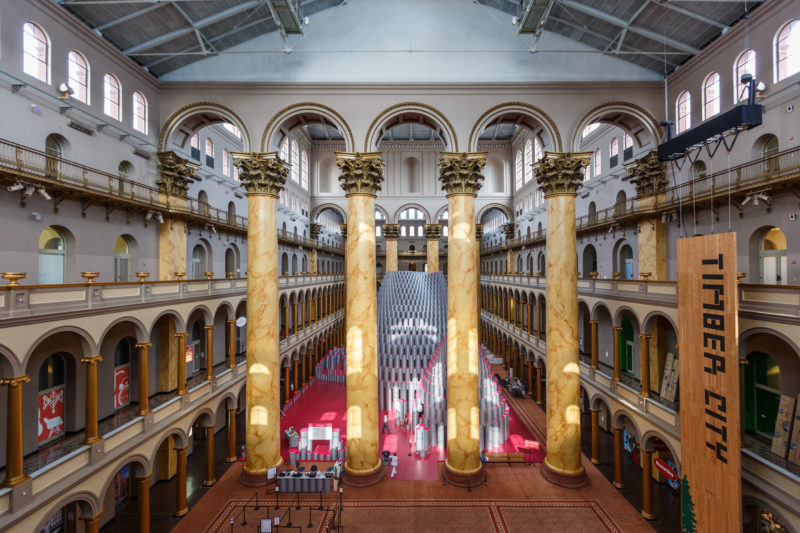
Inside the acoustic chambers, visitors could interact with the drum-like tubes and chimes situated within the walls, thus exploring the manner in which sound 3 changes when it travels.
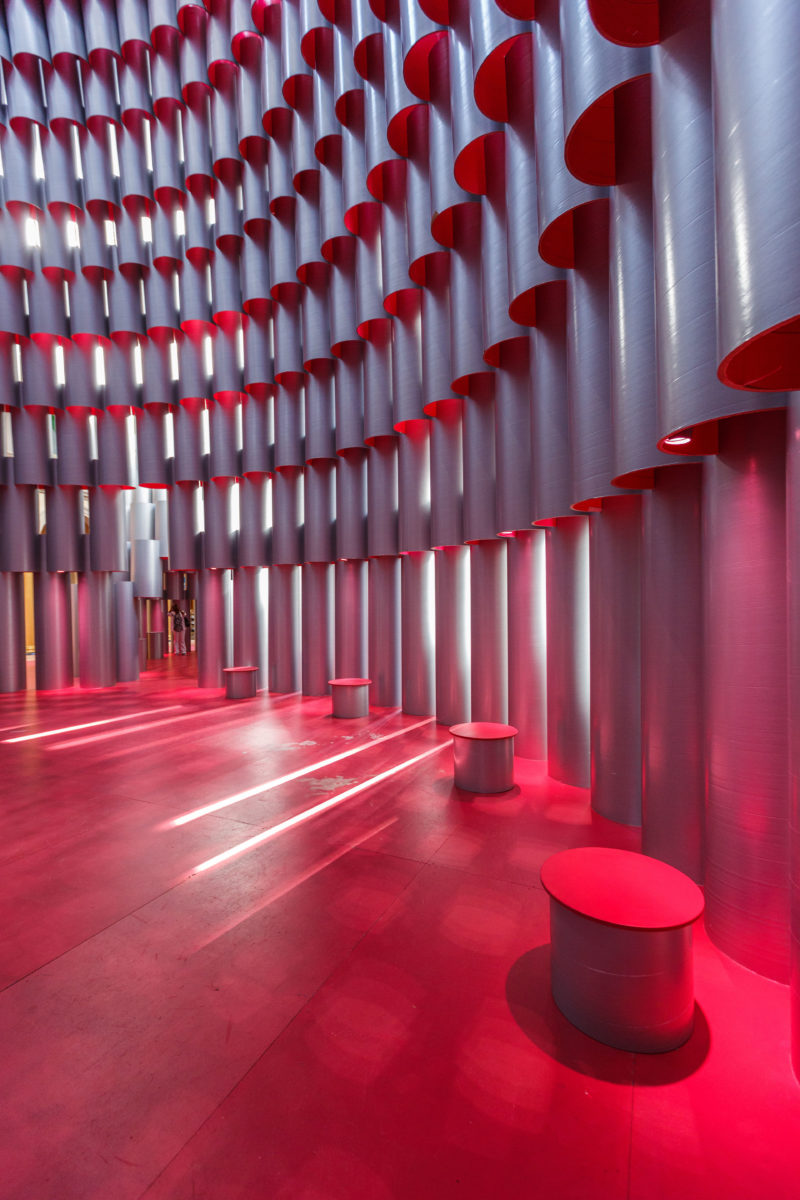
The National Building Museum knows how to attract masses in their numbers which would show up to experience the multisensory experience that would allow them to explore 4 how shapes can impact light, sounds and human interaction.
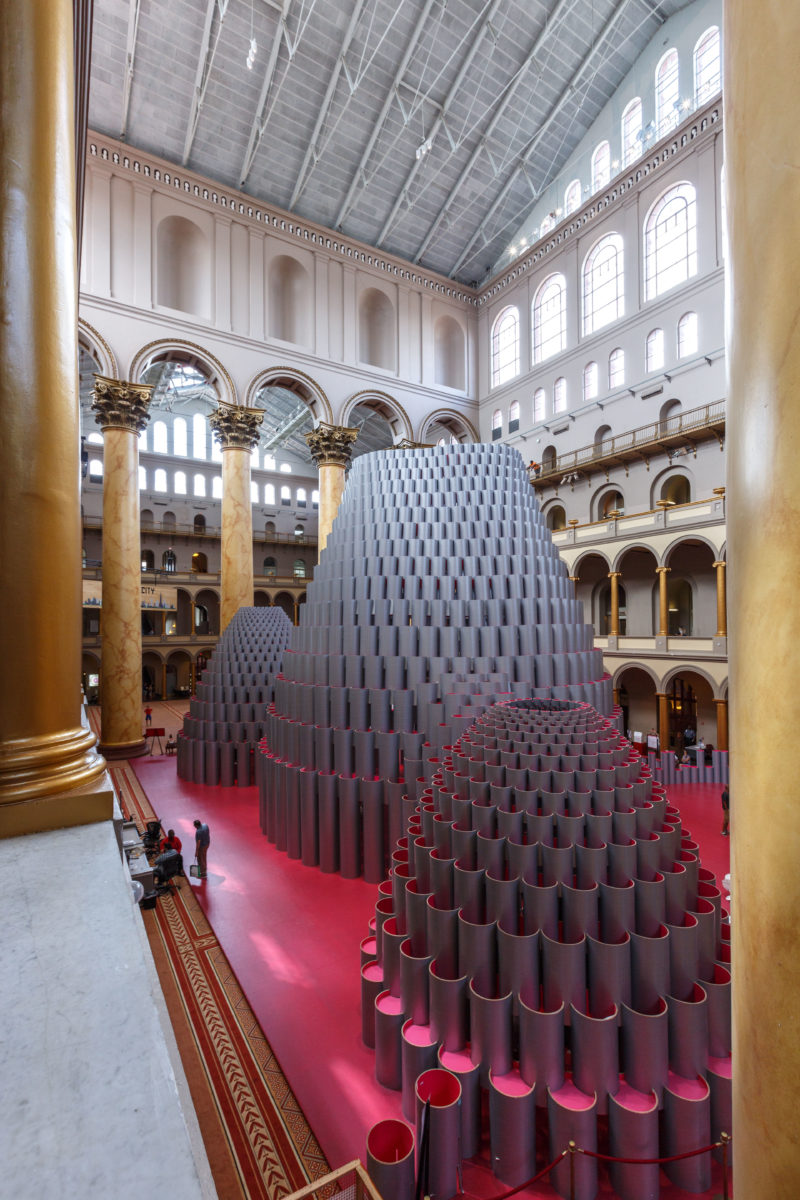
In 2015, they held a successful exhibition called The Beach 56 by New York-based collaborative design practice Snarkitecture 7 where the audience could experience a beach within a museum. In Hive, the audience could also easily trace the building materials within the domes and process as one could observe the notching and all other components used to assemble the dome.
Studio Gang
The domes were created as a collaborative effort by Studio Gang 8 and its founder Jeanne Gang’s 9 architecture 10 and urban design practice. This is not the first project of this magnitude that Studio Gang had worked on.
The studio has previously been associated with other massive projects, including the Aqua Tower in Chicago and the Arcus Center for Social Justice Leadership situated in Michigan.
Inspiration
Studio Gang’s inspiration for the structure was acquired from the geometric shapes and patterns that are found naturally occurring in nature. The tubes used to create the dome were painted silver on the exterior and magenta on the interior. According to the artist, the magenta was inspired by the pink that’s often featured heavily during women’s matches.
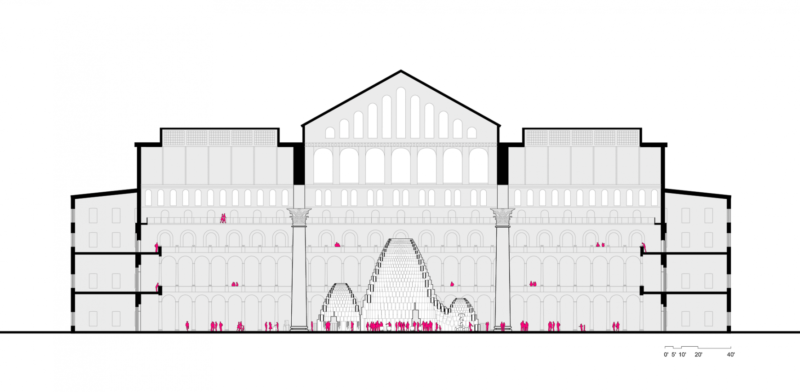
Construction
For this particular project, Studio Gang spent six months in total coming up with the design concept as well as creating both the physical and digital models, some of which were made from simple toilet paper rolls. Creating the models was the first step in determining the exact dimensions needed for the projects.
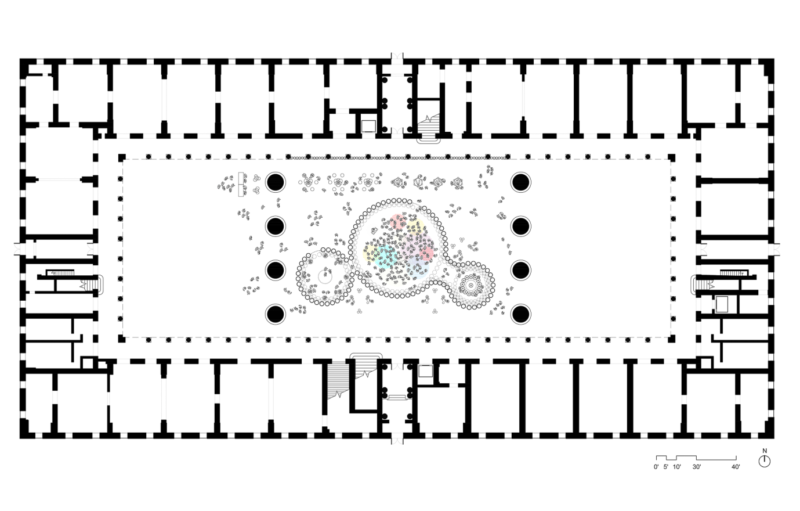
Once the models were ready, the studio invited carpenter Chris Maclay and his team, who cut the notches into thousands of different-sized tubes with varying weights for the installation. The smallest tubes were several inches high, while the tallest ones went as high as 60 feet tall. The tallest dome in the installation featured an oculus with a diameter of more than 10 feet.
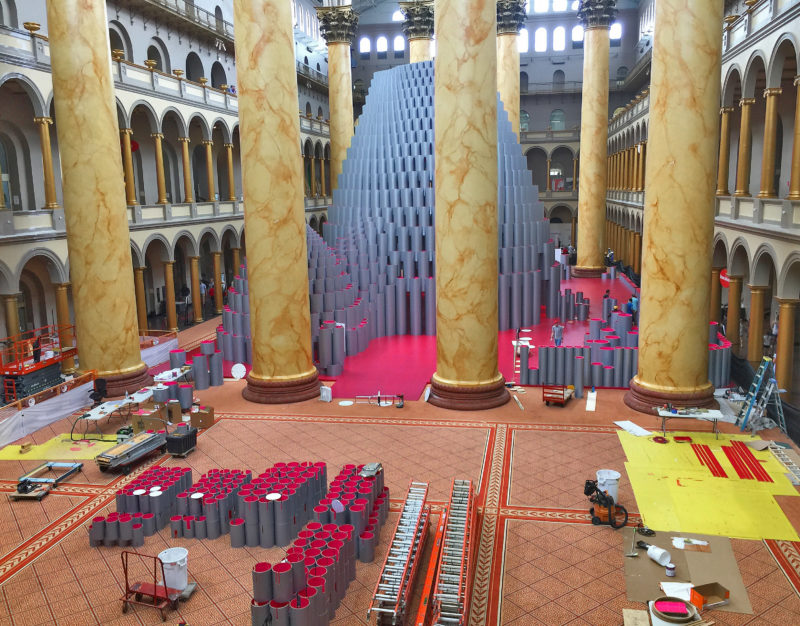
The team also assembled and fit the different tubes together. In total, Maclay and his team used more than 2700 paper tubes that helped to create a spectacular visual contrast with the national museum’s interior and its characteristic enormous Corinthian columns.
The tall yet very intimate structure allowed visitors to inhabit the installation at the ground level, but people could also experience it from the upper floor balconies in the museum.
How do you feel inside Hive?
Speaking about the experience inside Hive, Jeanne Gang commented 1112:
When you enter the Great Hall you almost feel like you’re in an outside space because of the distance sound travels before it is reflected back and made audible. We’ve designed a series of chambers shaped by sound that are ideally suited for intimate conversations and gatherings as well as performances and acoustic experimentation . . . We create a hive for these activities, bringing people together to explore and engage the senses.
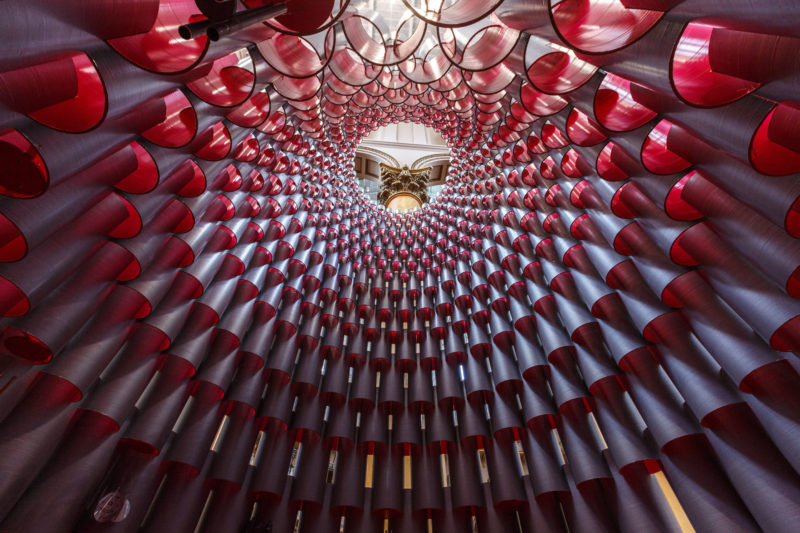
The massive main chamber was also topped by a soaring dome that filtered the natural light of the hall, helping to create shadows and patterns within the space. As such, audiences were treated to different points of view, thus allowing them to better analyze the piece.
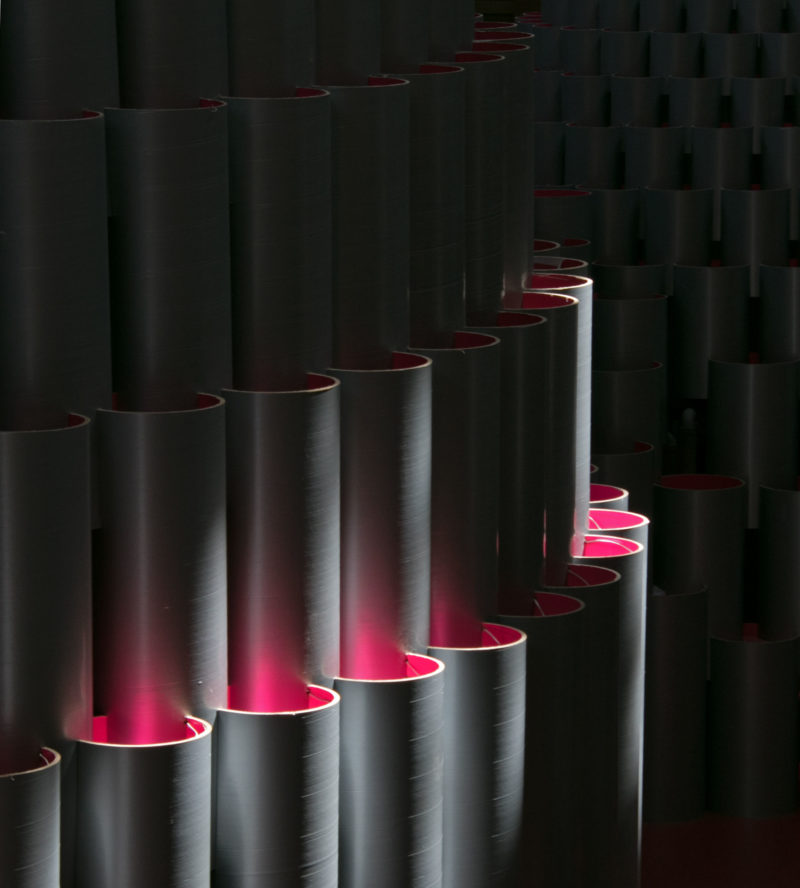
Speaking about the sound, Jeanne Gang said in ARCHITECT 1314:
We noticed inside the Great Hall space, that the sound in there is almost like being outside in the middle of a field. You can say something if you are standing 10 feet away from someone and you can’t almost hear it, it’s that big of a space. So we wanted to bring that down and create a space where the acoustic properties would be noticeably different.
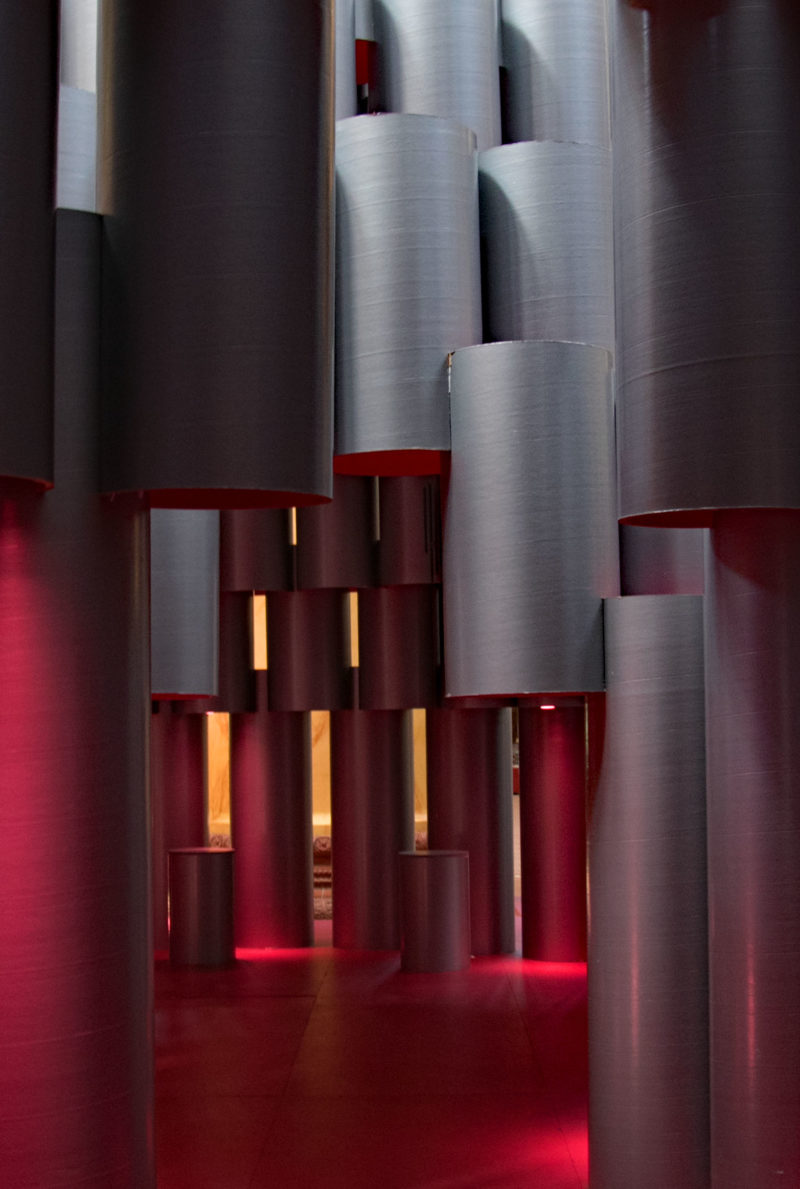
Each of the chambers in the installation boasted unique acoustic properties that impacted the tone, reverb, and reflection that were unique to each visit.
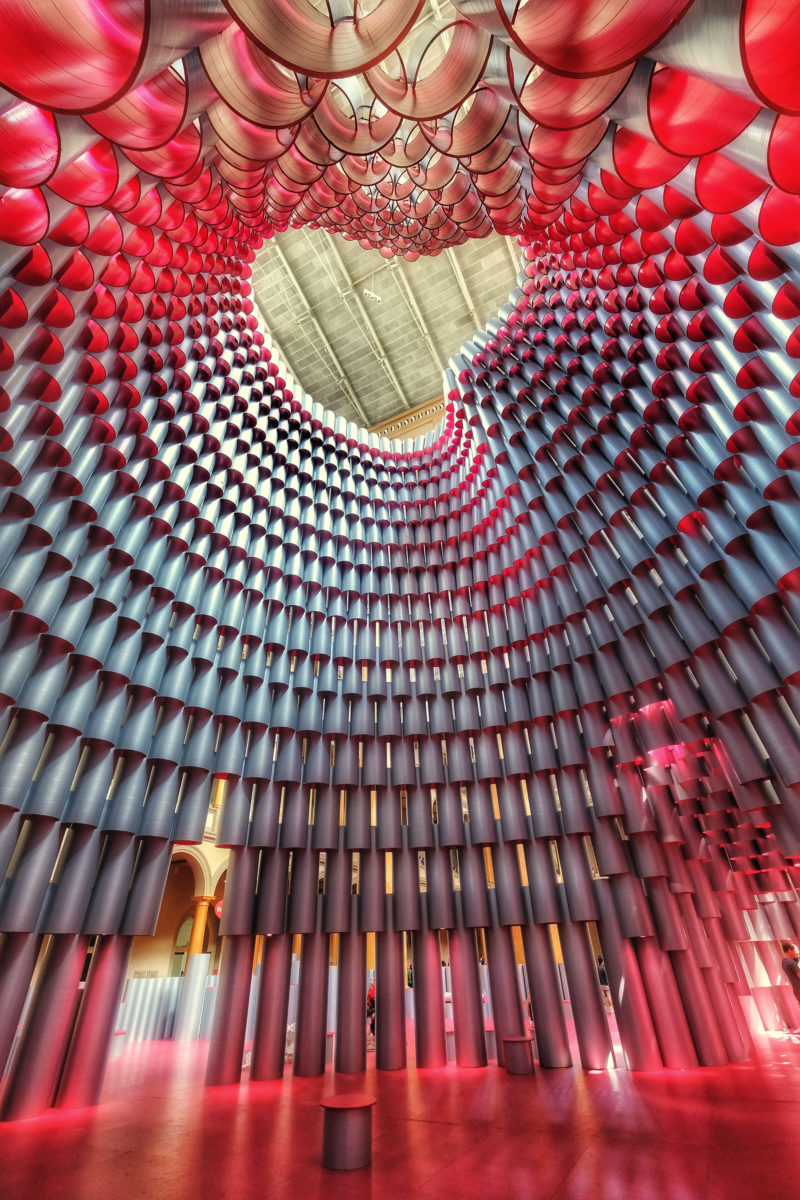
More National Building Museum exhibitions
Explore nearby
National Building Museum, Washington, D.C.
 Snarkitecture's beach in a museumExhibition ended (dismantled in 2015)0 km away
Snarkitecture's beach in a museumExhibition ended (dismantled in 2015)0 km away
 Ivanka Trump vacuumingPerformance ended (staged in 2019)1 km away
Ivanka Trump vacuumingPerformance ended (staged in 2019)1 km away Fernand Léger's The city painting197 km away
Fernand Léger's The city painting197 km away Cai Guo-Qiang's blossoms explosionPerformance ended (staged in 2009)197 km away
Cai Guo-Qiang's blossoms explosionPerformance ended (staged in 2009)197 km away


